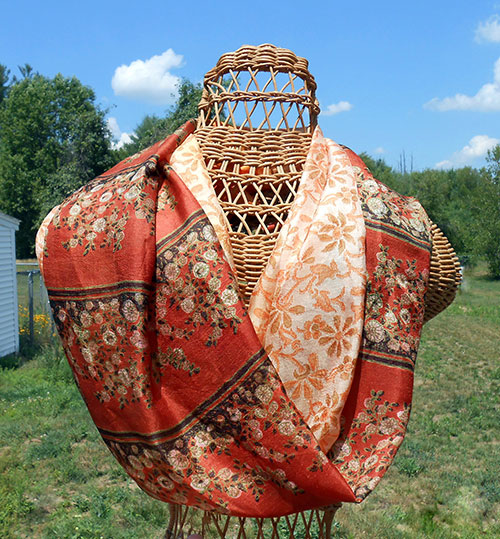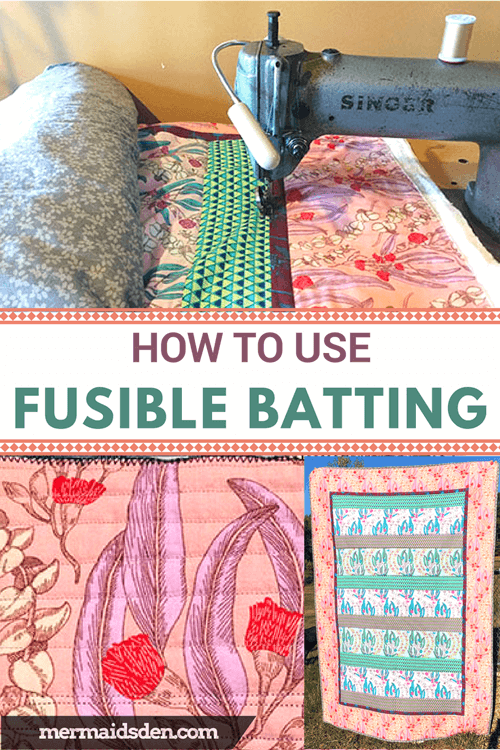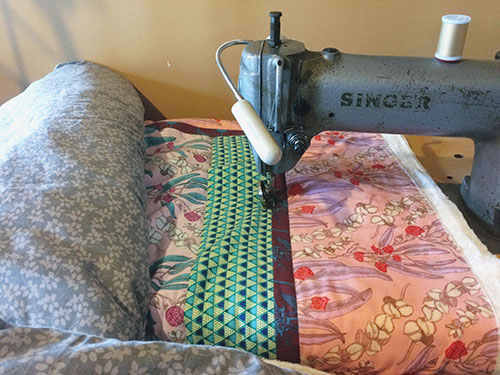Fusible Batting for Quilts: How Well Does It Work?
In this post, I'll review the pros and cons of using fusible batting in quilts. I have so much trouble when I sew with batting, but fusible batting made things easier. For quilts, some people use pin basting, some use adhesive spray, and some even use Elmer's glue. When I first saw fusible batting, I was really excited for it because I can't keep batting in place at all when I'm sewing, no matter what I do. I feel like I'm sewing on a slip and slide. Fusible batting seemed like it would be an easy answer to my problems.
Disclosure: This post contains affiliate links, which means I may receive a percentage if you make a purchase using these links. This won’t cost anything extra to you. I only link to things I like and use, and the proceeds help me to run this blog. Thank you for supporting me!
Materials used
Instructions
Before purchasing it, I couldn't find a lot of information on how to use Hobbs' fusible batting, and even the Q&A on the Amazon product page contained some conflicting advice, particularly regarding whether you should wash the batting first. I couldn't find a lot of information on it online, either. I decided to just go ahead and buy it, hoping the package would come with more information, and it did!
The directions on the bag instruct you "to temporarily attach top and bottom fabrics to the batting by ironing with the iron set on 'cotton' setting. This is not a permanent attachment, and can be peeled off and reattached if need be." The Amazon product page further notes that you should, "Simply press your quilt from the center to the outer edges. Make sure you keep your iron moving, pressing approximately 3-4 seconds in each area."
It's low loft, about 3mm in width. I ended up doubling the batting in my quilt because one layer did not seem thick enough.
It's 80% cotton and 20% polyester, so it will shrink a bit when first washed. The directions say that it may shrink up to 3%, and that you should not pre-wash either the batting or your quilt fabric. Washing the batting will remove the adhesive. You should wash the finished quilt and let everything shrink at the same time. I had, unfortunately, pre-washed all of my quilt fabric, but I decided to make a test swatch to see how bad the shrinkage would be.
Test Swatch
My test swatch was about 8" x 5" and I used my chosen quilt fabric to get an idea of how the un-shrunk batting would work with the pre-shrunk fabric.
Here's what it looked like when first quilted.
This is how it looked after washing and drying.
And here's how it looked after ironing. It was a little more crinkled than the initial swatch, but not so much so that it looked bad. I decided to go ahead and use the pre-washed fabric with the fusible batting.
Quilting
The batting is quite wrinkly out of the package, but once you iron it to the fabric, the wrinkles come out. I would not advise ironing it separately, as it will stick to your iron.
In my experience, it did not hold very firmly. As the direction note, it is a temporary attachment and can easily be adjusted by peeling the fabric away from the batting. Some people on the Amazon product page mentioned pin basting the piece anyway, which may also help.
The batting is fusible on both sides. However, it's hard to get both sides of the quilt fused. Turning the quilt to iron the other side tends to un-stick the first side, due to handling and shifting. I just made sure the top was well ironed and left the bottom of the quilt as is.
Rolling up the quilt so it fit on my sewing table also seemed to loosen the fusible batting to the point where it needed to be re-ironed.
It seemed easiest to iron the part of the quilt you're going to work on and then iron the next section before working on it, just to keep everything together and smooth.
If you iron it ahead of time and your quilt sits for awhile (a day or two), you'll likely need to re-iron it before beginning to work on it again.
I washed my finished quilt in cold water on a normal cycle with regular detergent and dried it in the dryer for about 40 minutes. I didn't follow the special washing/drying instructions on the bag. The quilt came out fine after a normal wash/dry cycle.
Here's the finished quilt after washing. See the other post I wrote about this quilt: Designing Your Quilt with Adobe Illustrator
The Verdict on Fusible Batting
Fusible batting is not quite as good as I was hoping it would be, but for me, it was definitely better than sewing with regular batting. I wish it held a little more firmly so it would stay better adhered during handling. Still, I'd probably use it again on small- to medium-sized projects.















